Sourcing impartial data is an essential step in conducting a Health Equity Impact Assessment. In this short FAQ, DataGen’s Melissa Bauer, principal healthcare informatics analyst, explains:
impartial data in relation to health equity assessment and advancement;
why impartial data are needed; and
how impartial data help hospitals, ambulatory surgery centers and other providers evaluate how healthcare proposals may or may not impact underserved communities.
FAQ 1: What are impartial data?
Third-party data sources and independent entities are to provide impartial data. These data provide an accurate understanding of the potential effects of healthcare initiatives while helping to ensure that supporting data points and, ultimately, decisions are not biased toward the provider. An example of impartial data would include the underserved/marginal population rates for the service area of contracting providers.
FAQ 2: Why is it important to have impartial data?
Organizations need impartial data to meet the New York state requirements and make informed decisions. Impartial data are required to complete the state’s Health Equity Impact Assessment Requirement Criteria, including templates, scoping sheets and data tables.
In addition, using impartial data ensures that the HEIA assessment is conducted objectively. By using third-party data sources and independent entities, the HEIA intends to provide a fair evaluation of the potential effects of healthcare decisions on health equity.
FAQ 3: How can DataGen help?
Independent entities, also referred to as third-party contractors, must use state-defined HEIA Data Tables to identify populations impacted by the provider’s Certificate of Need. Here are two ways DataGen can help:
1. Subcontractor for independent entities
Article 28 facilities are required to contract with third-party entities to complete an impartial HEIA, which needs to accompany each facility's CON. DataGen doesn’t contract directly with providers; rather, we would be a subcontractor for independent entities.In other words, DataGen can help Article 28 facilities get the impartial data they need to help complete their CON requirements and submit their HEIA. Specifically, DataGen has access to all impartial data needed for scoping sheets one and two. We can take the data for the contracting facility's service area and provide it to the independent entity in the New York state-required format.
2. Data expert for market share analysis
In addition, we provide analytics for market share analysis using New York state Statewide Planning and Research Cooperative System data. Our access gives DataGen the unique ability to do a market share analysis, potentially outside of the independent entity’s capabilities.
For example, DataGen provides demographic information on catchment area populations, including Excel Power Pivot models for:
service area patient demographics data;
service volumes for catchment areas;
sexual orientation gender identity (SOGI) data; and
We’ll even help you achieve SPARCS compliance to aid in the CON process.
The wrap-up: Your health equity toolkit
To help keep your learning going, you can add these two resources to your health equity toolkit:
Five fast facts on New York state HEIA requirements: This blog post outlines the basic HEIA guidelines, scenarios and documents, providing key details on the impacted facilities and CON HEIAs.
Five key CON HEIA components: This blog post drills deeper into CON requirements. It also covers how experienced assessment partners can facilitate successful expansion, amplify the community’s voice and improve health equity.
More about DataGen
DataGen already provides analytics-first support to hospitals and health systems across New York, and the U.S. Contact us today for a free HEIA consultation and learn how we can support your health equity efforts every step of the way.


Comments
Post a Comment